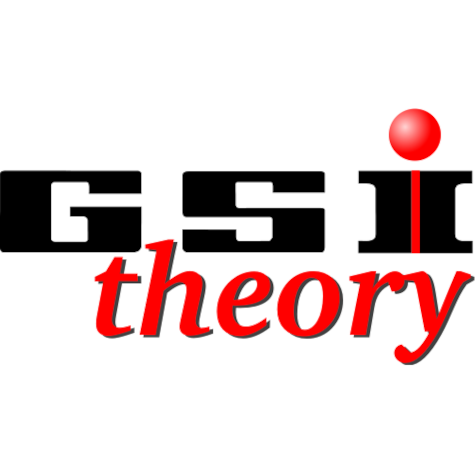Explosive Nukleosynthese
The chemical composition of the universe changes with time as nuclear reactions in stars and other astrophysical sites change the abundances of the elements by nucleosynthesis. Nuclear reactions require high temperatures and densities to occur [1].
During the hydrostatic phases of stellar evolution, nuclear reactions proceed very slowly compared to the hydrodynamic response of the environment. This means that the hydrodynamic properties can adjust almost instantly to the changes in the composition and settle into a new equilibrium. However, there are other phases like during a supernova explosion, when nuclear reactions proceed much faster than the dynamical timescale of the environment. In this situations explosive nucleosynthesis occurs which can change the composition drastically in a very short time. Especially in these cases it is important to describe the nuclear reactions that are involved in detail, as no equilibrium assumptions can be made. In this case it is necessary to solve the equations that determine the evolution of the abundances of all the relevant nuclei. Those equations form a system of non-linear coupled differential equations and large efforts have been done in the past decades to develop techniques for this kind of problem The evolution of each nuclear species is coupled to the evolution of other nuclei by nuclear reactions that are described by the corresponding cross-sections, forming a nuclear reaction network. Depending on the scenario that is to be studied, such networks include between a few hundred and several thousand nuclei, interconnected by up to hundreds of thousands of reaction channels. The nuclear reaction cross sections need to be known with high accuracy to make realistic predictions for the nucleosynthetic outcome of astrophysical events, which is an important link between theory and observations [2] .
Advances in astrophysical simulations (e.g. [3]) and extended databases (e.g. [4]) for high precision nuclear data have made it possible to reproduce the key abundance pattern we can observe in our solar system.
In some cases, like in the rapid neutron capture process (r-process) that could happen in the merger of binary neutron stars, nucleosynthesis proceed far away from the stable nuclei and most of the cross-sections need to be taken from theoretical calculations. The r-process is expected to produce many of the heavy elements that are heavier than Iron an can therefore not be made in hydrostatic fusion processes. The site of the r-process is a matter of current research and nucleosynthesis calculations are crucial to determine which conditions are suitable to produce which elements and the associated electromagnetic signature [5]. Nuclear reaction rates are a key input for nucleosynthesis calculations and involve a great deal of uncertainties especially far away from stability. Finding the key reactions that can have a large impact on the whole nucleosynthesis is one of the main goals of nucleosynthesis calculations. In recent years, the astrophysical importance of specific rates has become a major motivation for large-scale nuclear experiments. Many open questions about the details of the different nucleosynthesis processes and their astrophysical sites remain. In our group work has been done to determine the impact of nuclear mass models, can have on r-process nucleosynthesis ([5]).
It has also become clear in recent years that weak interactions and especially neutrinos play an important role in nucleosynthesis. In core-collapse supernovae , which are violent explosions that mark the end of the live of a massive star, neutrino interactions determine the nucleosynthesis conditions in the neutrino-driven wind [6] .
Neutrinos can also play a role for the nucleosynthesis in the supernova explosion itself. The shock wave of the explosion compresses and heats the outer layers of the star and leads to a final phase of explosive nucleosynthesis, while the material is also irradiated by neutrinos. Due to the large fluxes, those neutrinos can directly induce nuclear reactions and contribute to the production of some rare elements, that are difficult to be produced by thermonuclear reactions. In our group we have calculated the necessary neutrino-nucleus cross-sections and study their impact on supernova nucleosynthesis [7]. The nucleosynthesis is also sensitive to neutrino flavor transformations in the stellar environment.
Referenzen
- [1] Wiki article on nucleosynthesis
- [2] D. Arnett, Explosive Nucleosynthesis revisited
- [3] H.-T. Janka et al., Physics of Core-Collapse Supernovae in Three Dimensions: a Sneak Preview
- [4] I. Dillmann, the JINA-CARINA Collaboration, Recent Efforts in Data Compilations for Nuclear Astrophysics
- [5] J. Barnes, D. Kasen, M.-R. Wu, and G. Martínez-Pinedo, Radioactivity and thermalization in the ejecta of compact object mergers and their impact on kilonova light curves
- [6] Joel de Jesús Mendoza-Temis, Meng-Ru Wu et al., On the nuclear robustness of the r process in neutron-star mergers
- [7] G. Martínez-Pinedo, T. Fischer, A. Lohs, L. Huther, Charged-current weak interaction processes in hot and dense matter and its impact on the spectra of neutrinos emitted from proto-neutron star cooling
- [8] A. Sieverding, L. Huther, K. Langanke, G. Martínez-Pinedo, A. Heger, Neutrino Nucleosynthesis of radioactive nuclei in supernovae







